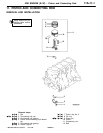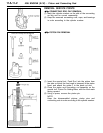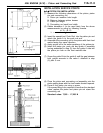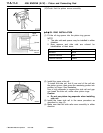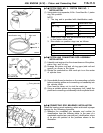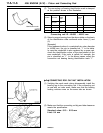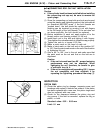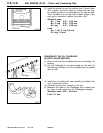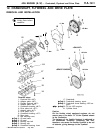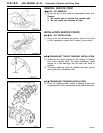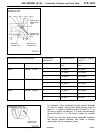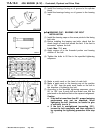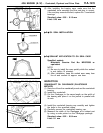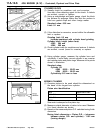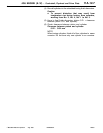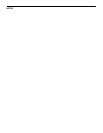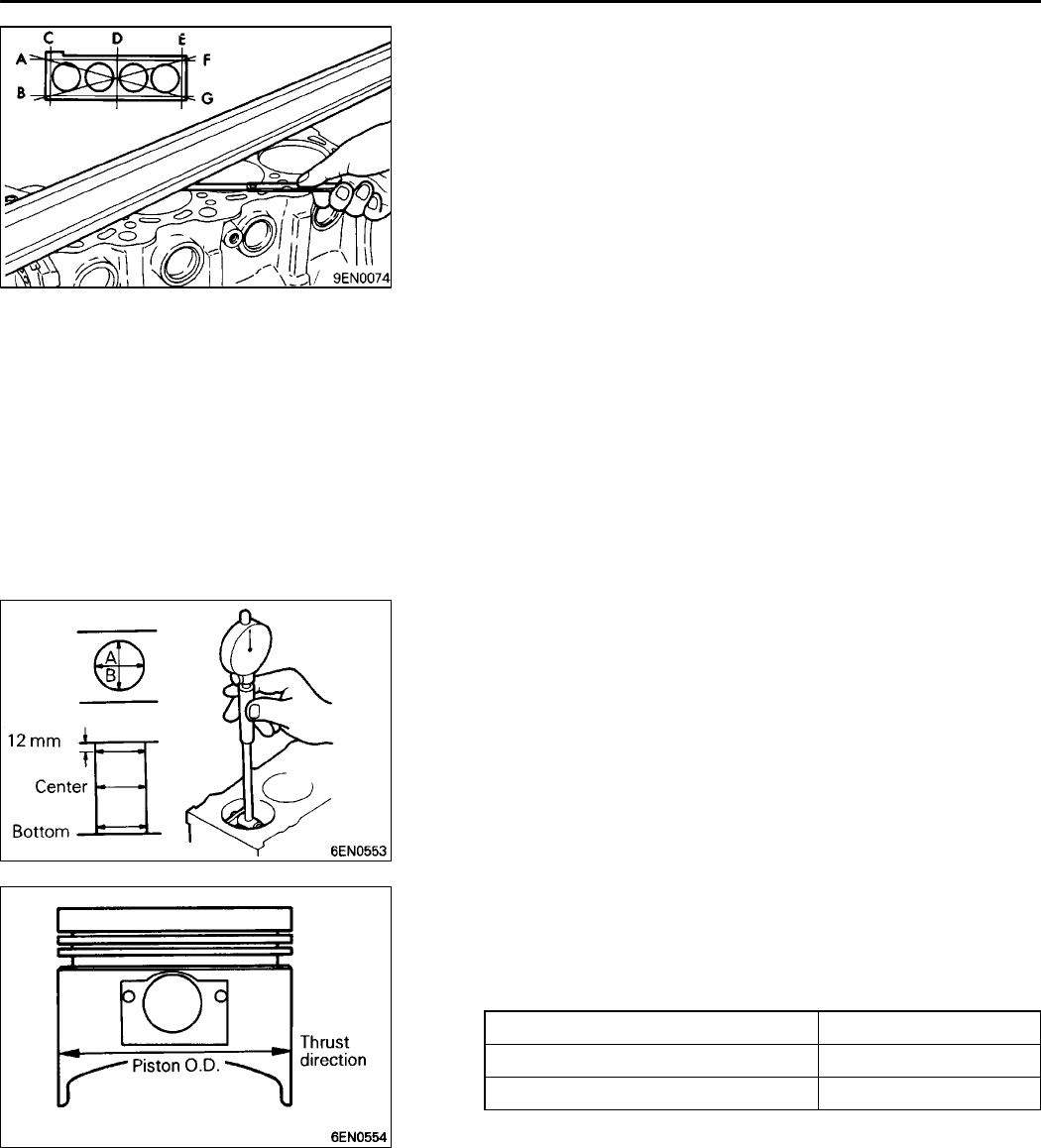
4G6 ENGINE (E-W) -
Crankshaft, Flywheel and Drive Plate
11A-12-6
CYLINDER BLOCK
(1) Visually check for scratches, rust, and corrosion.
Use also a flaw detecting agent for the check. If defects
are evident, correct, or replace.
(2) Using a straightedge and feeler gauge, check the block
top surface for warpage. Make sure that the surface is
free from gasket chips and other foreign matter.
Standard value: 0.05 mm
Limit: 0.1 mm
(3) If the distortion is excessive, correct within the allowable
limit or replace.
Grinding limit: 0.2 mm
Includes/combined with cylinder head grinding
Cylinder block height (when new):
4G63 284 mm
4G64 290 mm
(4) Check cylinder walls for scratches and seizure. If defects
are evident, correct (bored to oversize) or replace.
(5) Using cylinder gauge, measure the cylinder bore and
cylindricity. If worn badly, correct cylinder to an oversize
and replace piston and piston rings. Measure at the points
shown in illustration.
Standard value:
Cylinder I.D.
4G63 85.00 - 85.03 mm
4G64 86.50 - 86.53 mm
Cylindricity 0.01 mm or less
BORING CYLINDER
(1) Oversize pistons to be used should be determined on
the basis of the largest bore cylinder.
Piston size identification
Size Identification mark
0.50 O.S. 0.50
1.00 O.S. 1.00
NOTE
Size mark is stamped on the piston top.
(2) Measure outside diameter of piston to be used. Measure
it in thrust direction as shown.
(3) Based on the measured piston O.D. calculate boring finish
dimension.
Boring finish dimension = Piston O.D. + (clearance
between piston O.D. and cylinder) - 0.02 mm
(honing margin)
RevisedPWEE9616-A
E
Aug. 1998Mitsubishi Motors Corporation



